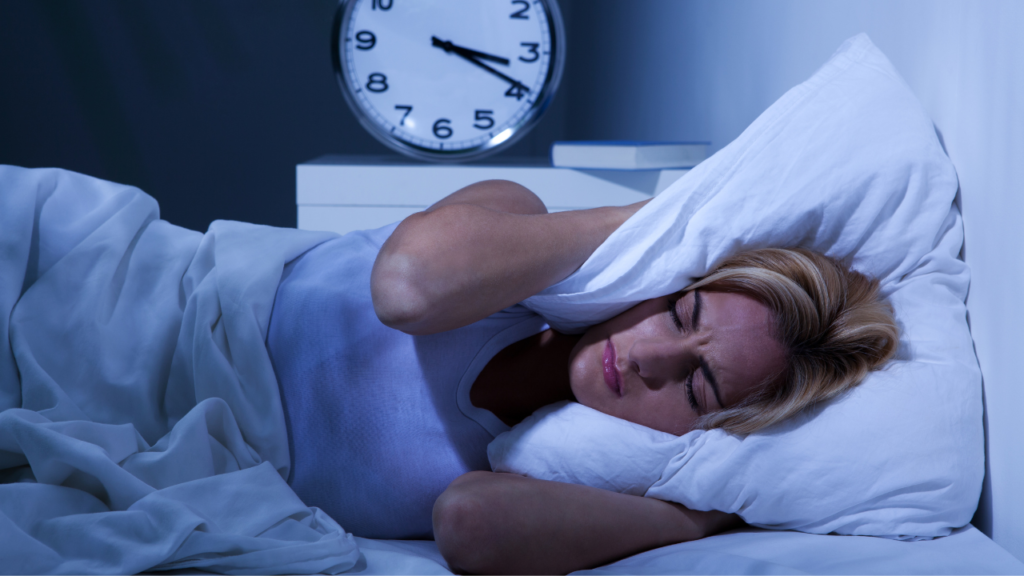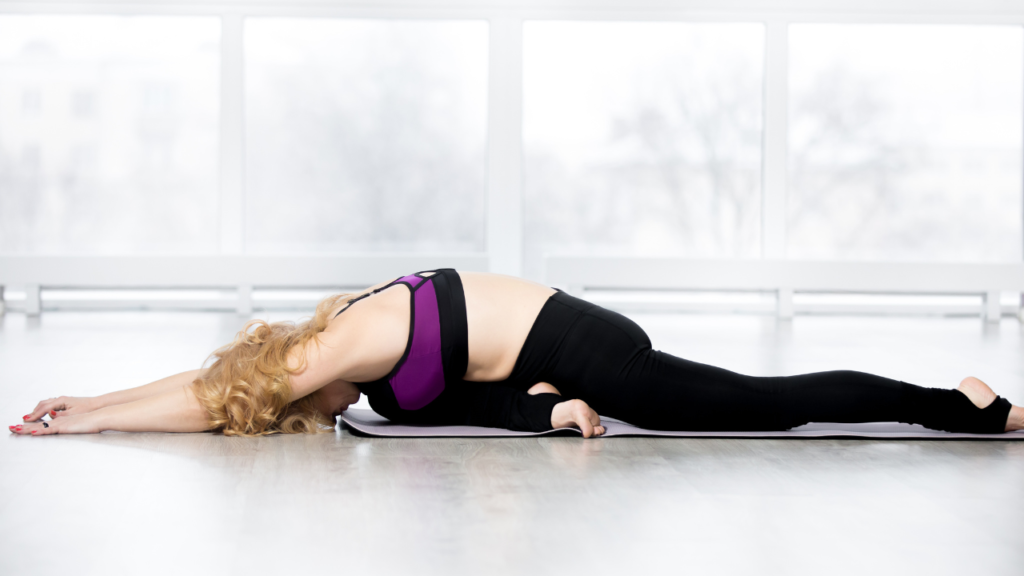
Insomnia takes away your energy and makes you feel down all day. It also affects your health, makes it hard to do well at work, and steals happiness from your life. The amount of sleep people need is different for each person. Usually, adults need around seven to eight hours of sleep every night. Insomnia can happen on its own, or it may be associated with other health problems and or medications. How to fall asleep in 10 seconds with insomnia? To get the answer please read our article.
You don’t need to accept sleepless nights making small adjustments in your daily routine can make a big difference. Unlock Better Sleep with the Confident Hormone Club! Start your journey to overcoming insomnia today and learn how to help your hormones and body during times of stress, anxiety, or hormonal changes, to get you back to good quality sleep.
Effects of Insomnia on Health
Chronic insomnia can affect your behavior, mood, and overall health. It can make you more likely to have certain health problems and make existing ones worse. Insomnia can cause:
- Breathing issues like asthma and other problems with your lungs.
- Heart problems like heart disease, due to extra work on the heart, like hypertension.
- Anxiety or depression, anxiety, or even thoughts about causing harm to yourself.
- Using substances like drugs or alcohol too much to treat insomnia.
- Having insomnia while pregnant, is likely for the mom to have diabetes during pregnancy, have the baby too early, have a longer labor, or get a condition called preeclampsia
- Decreased immune function makes it harder for your body to fight off germs.
- Slow or sluggish metabolism or hormones control your appetite, gut health, and digestion, which can lead to gaining too much weight and other health troubles.
What is insomnia?
Insomnia means not being able to get enough good sleep. It can be hard to fall asleep, stay asleep, or both. People with insomnia wake up feeling tired. In other words, trouble sleeping is called insomnia. It is a common sleep disorder. You may have trouble falling asleep, getting good-quality sleep, or staying asleep. Even when you wake up, you might still feel tired. Transient insomnia may be caused by stress or changes in your daily environment or schedule. It can last for 1 night or up to a few weeks. When someone has chronic insomnia (which is long-lasting) it means they can’t sleep 3 or more nights each week, this can last for more than 3 months.
Insomnia Symptoms

Around 10% to 30% of adults go through problems like insomnia. This means they have a hard time falling asleep or staying asleep every night. The signs of fitful sleep are different for each person and mostly depend on whether it’s a long-lasting issue or just for a little while.
- Trouble falling asleep at night
- Waking up in the middle of the night
- Getting up too early
- Struggling in social, work, and school situations
- Not feeling refreshed after sleeping
- Feeling tired or sleepy during the day
- Being more irritable, sad, or anxious
- Dealing with extra energy, aggression, or other behavior problems
- Finding it hard to concentrate, focus, or remember things
- Making more mistakes or having accidents
- Constantly worrying about sleep
- Feeling worried because of losing or changing your job, someone you love passing away, getting divorced, or moving to a new place.
- Things like noise, light, or how hot or cold it is around you.
- When your sleep schedule changes, like traveling to a different time zone, starting a new work shift, or having bad habits that started when you had sleep troubles before.
- Your genes, which means it might be something that runs in your family, as studies have found that insomnia can be more likely if others in your family also have it.
Burnout insomnia
In the group of people studied who work with finances, stress from their jobs only leads to burnout if it is connected to insomnia. Insomnia is an alarming sign that can predict if there will be a problem with mental health or work productivity.
When to see a doctor for sound sleep medicine?
Whether insufficient sleep is impinging on your well-being, work performance, or daily routine, joining the Confident Hormone Club can offer valuable insights on how to improve your daytime alertness and concentration. It’s noteworthy that even if the symptoms do not manifest thrice a week or persist for three consecutive months, transient insomnia might still be at play. In the pursuit of achieving rejuvenating sleep, embracing holistic solutions can hold the key to resolving sleep-related concerns.
How to diagnose insomnia?
To facilitate an inclusive understanding of your sleep patterns, diligently record details such as your sleep onset, wake-up times, sleep latency, middle-of-the-night awakenings, and other nocturnal rituals. Concurrently, monitor your daytime activities, physical exertion, as well as caffeine and alcohol consumption. After you learn from the Confident Hormone Club and ask questions, use what you’ve learned to know what to do first to improve your sleep and health. Also, find out what you should do next with the right healthcare person or tools.
How to fall asleep in 10 seconds with insomnia?

Normally, it’s like using a special trick to fall asleep very fast and right when you want to. But with practice, you might get better at it and find that 10-second perfect timing.
- Relax the muscles inside your mouth including your entire face and relax the tension in your shoulders by laying flat on your back, hands with your palm face up, dropping your shoulders, and thinking about releasing the tension in your arms and legs, all the way down to your toes.
- To relax the tension drop your shoulders and let your hands to the side of your body.
- For 10 seconds think about a peaceful and calm place.
- Avoid overthinking and say the words “don’t think” over and over for 10 seconds.
- say the words “don’t think” over and over for 10 seconds. In less than 10 seconds.
4-7-8 breathing method
4-7-8 breathing method came up with a breathing trick. It’s built on pranayama exercises (Pranayama is a way to control your breathing. It’s a big part of yoga, which is an exercise for both your body and your mind to stay healthy). The more you practice this way of meditating and imagining, the better it could work for helping you sleep.
If you have a breathing problem like asthma or COPD, it’s a good idea to talk to a doctor before trying this, as it could make your symptoms worse.
Here’s how to perform 4-7-8 breathing method

Put the tip of your tongue against the roof of your mouth, right behind your two front teeth. Keep your tongue there the whole time, and if you need to, make your lips into a little “pucker.”
- Open your lips just a bit and let out a “whoosh” sound as you breathe out through your mouth.
- Shut your lips and quietly breathe in through your nose. Count to 4 in your mind.
- Hold your breath for 7 seconds. This step is really important.
- Breathe out (with a “whoosh” sound) for 8 seconds.
Progressive muscle relaxation (PMR)
Progressive muscle relaxation (PMR) is a type of therapy where you tighten and then relax different groups of muscles, one after the other, in a certain order. The aim is to make your muscles feel less tense and teach you how that tension feels.
- Lift your eyebrows really high for 5 seconds to make your forehead muscles tight.
- Then let your muscles get loose again and feel the tightness go away. Wait for 10 seconds.
- Make a big smile to make your cheeks tight. Keep it for 5 seconds, then relax.
- Wait for 10 seconds.
- Close your eyes tight like you’re squinting. Do it for 5 seconds, and then let go and relax.
- Lean your head back a little, so you can look at the ceiling without straining. Keep it for 5 seconds. Then relax and let your neck sink into the pillow.
- Wait for 10 seconds.
- Keep doing this with the rest of your body, starting from your upper arms, then your chest, then your thighs, and down to your feet.
- If you feel like it, fall asleep, even if you don’t finish doing this with your whole body.

